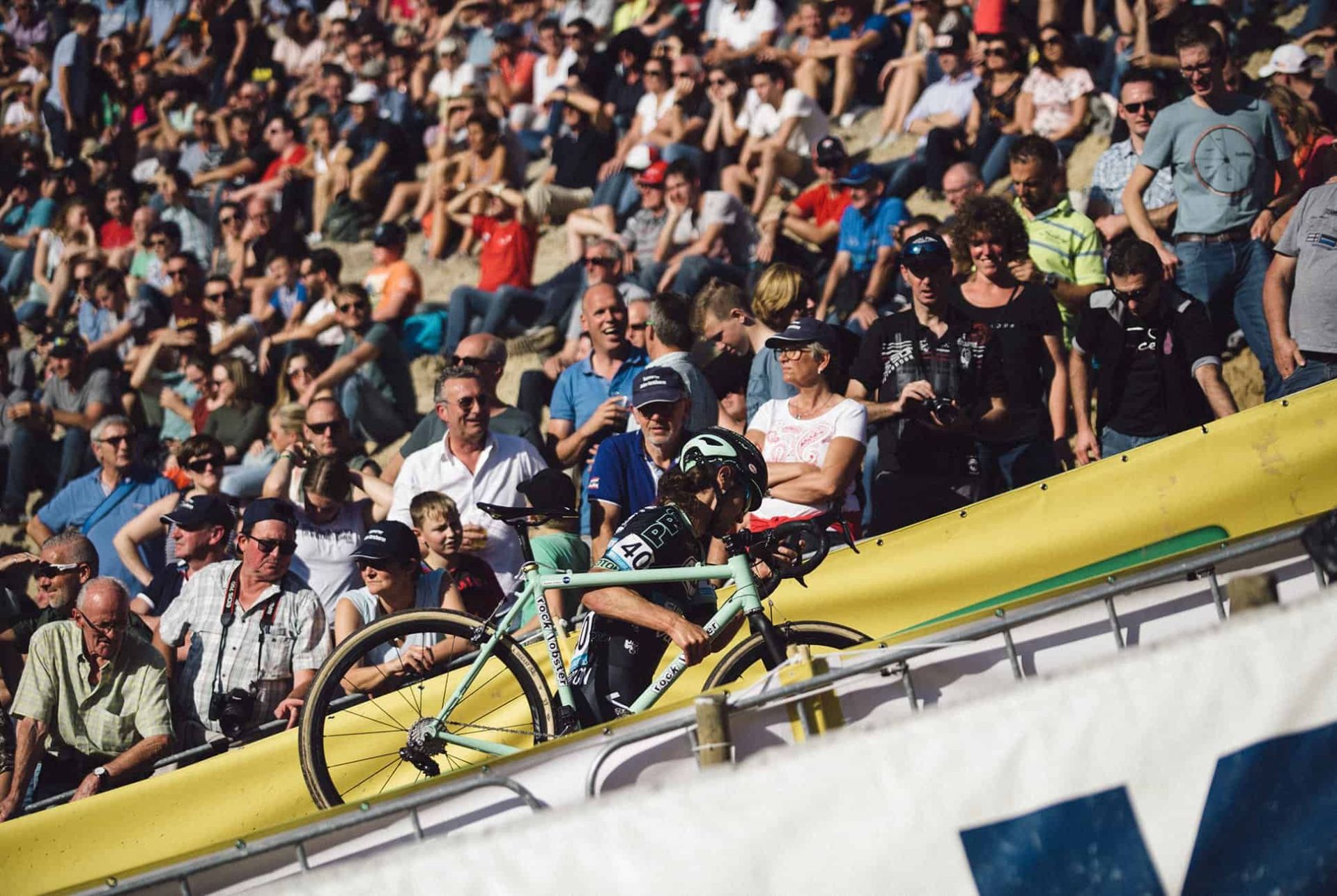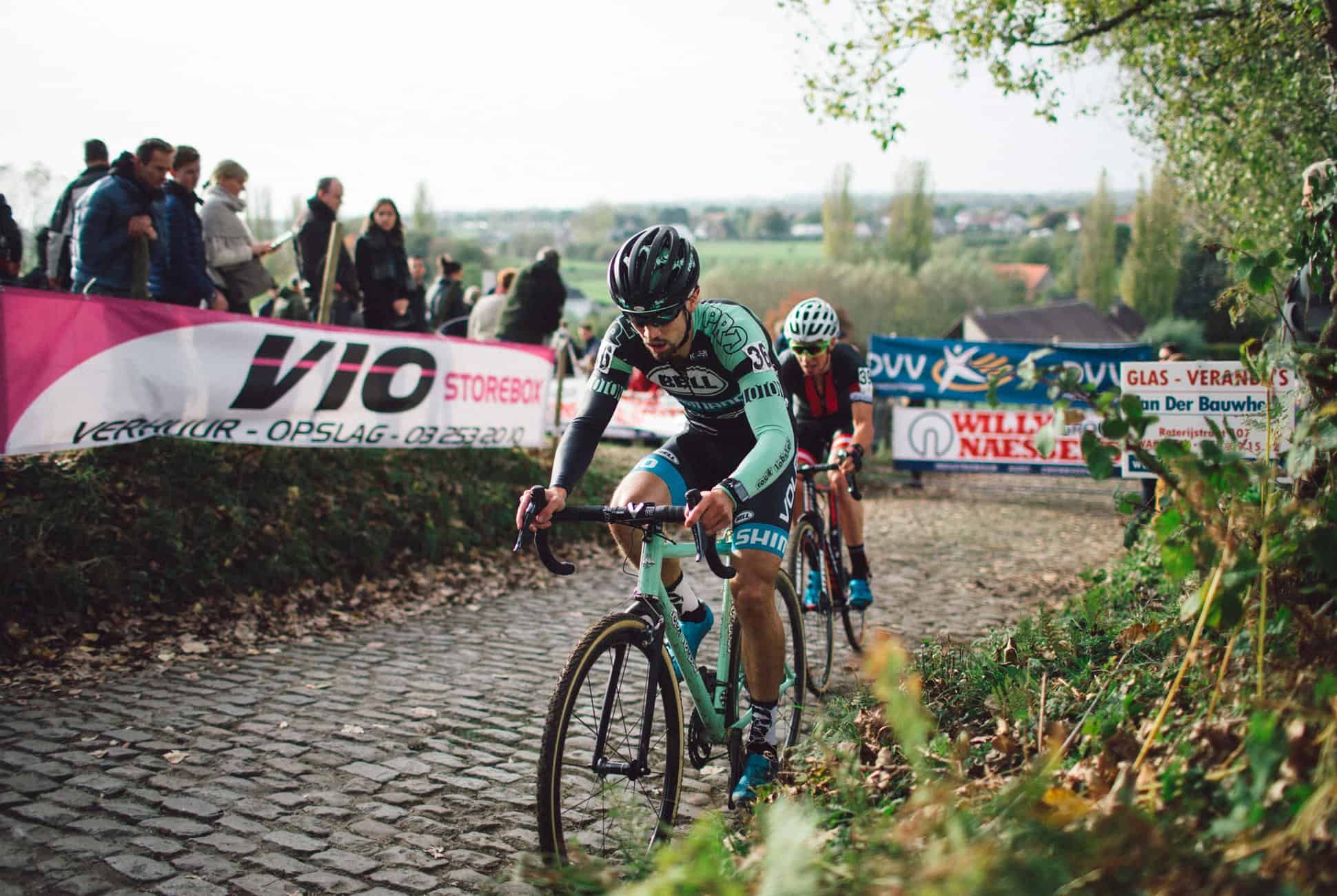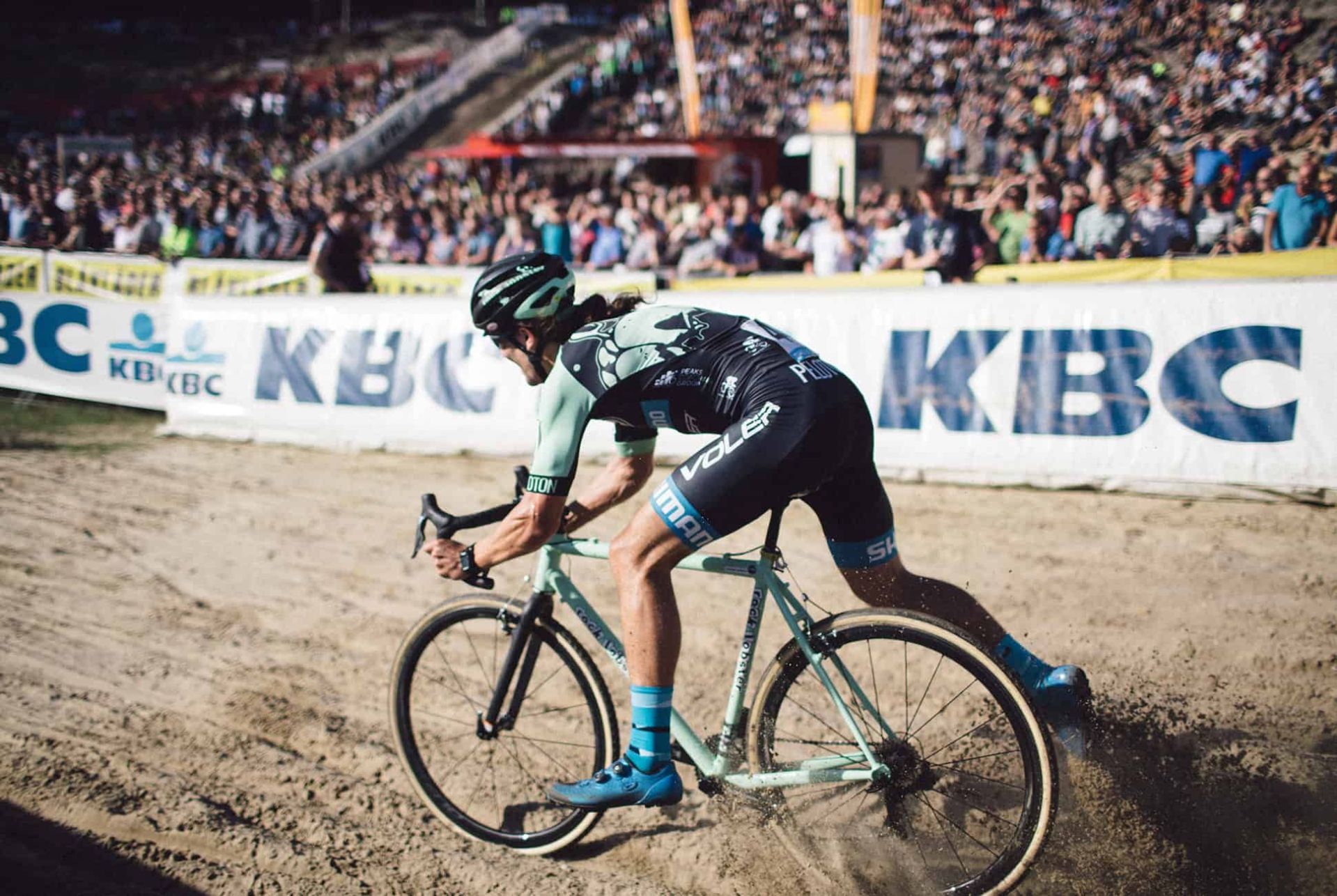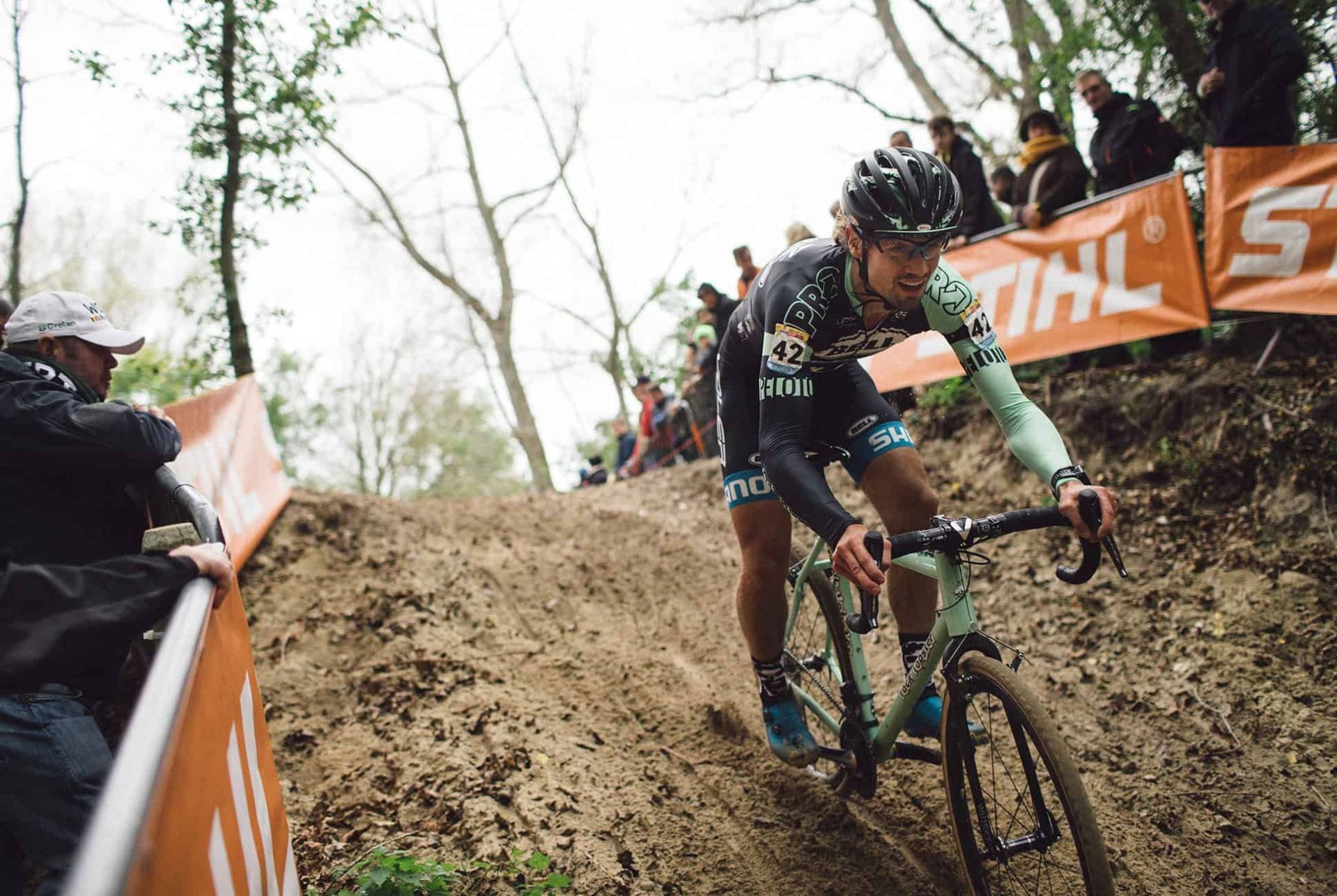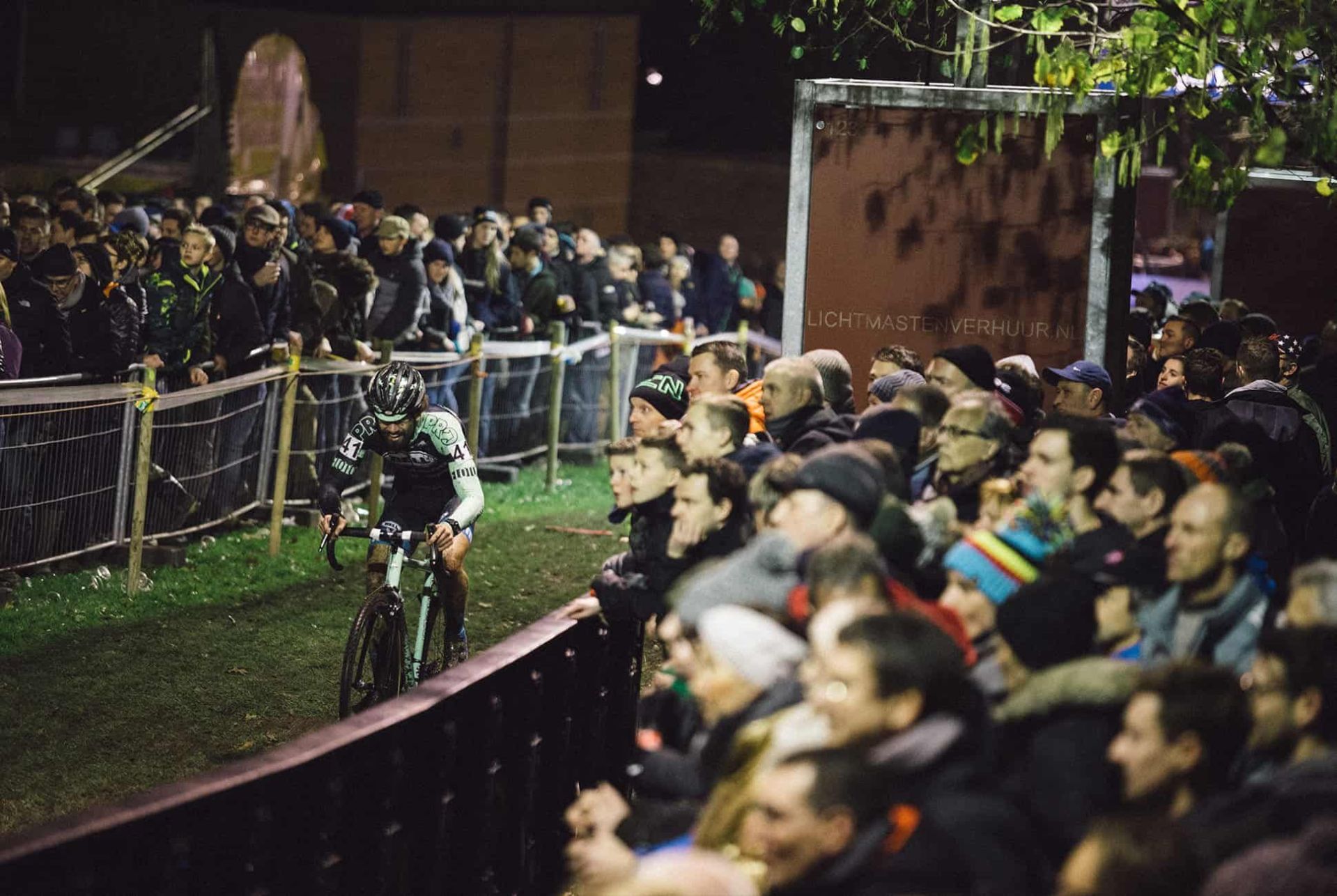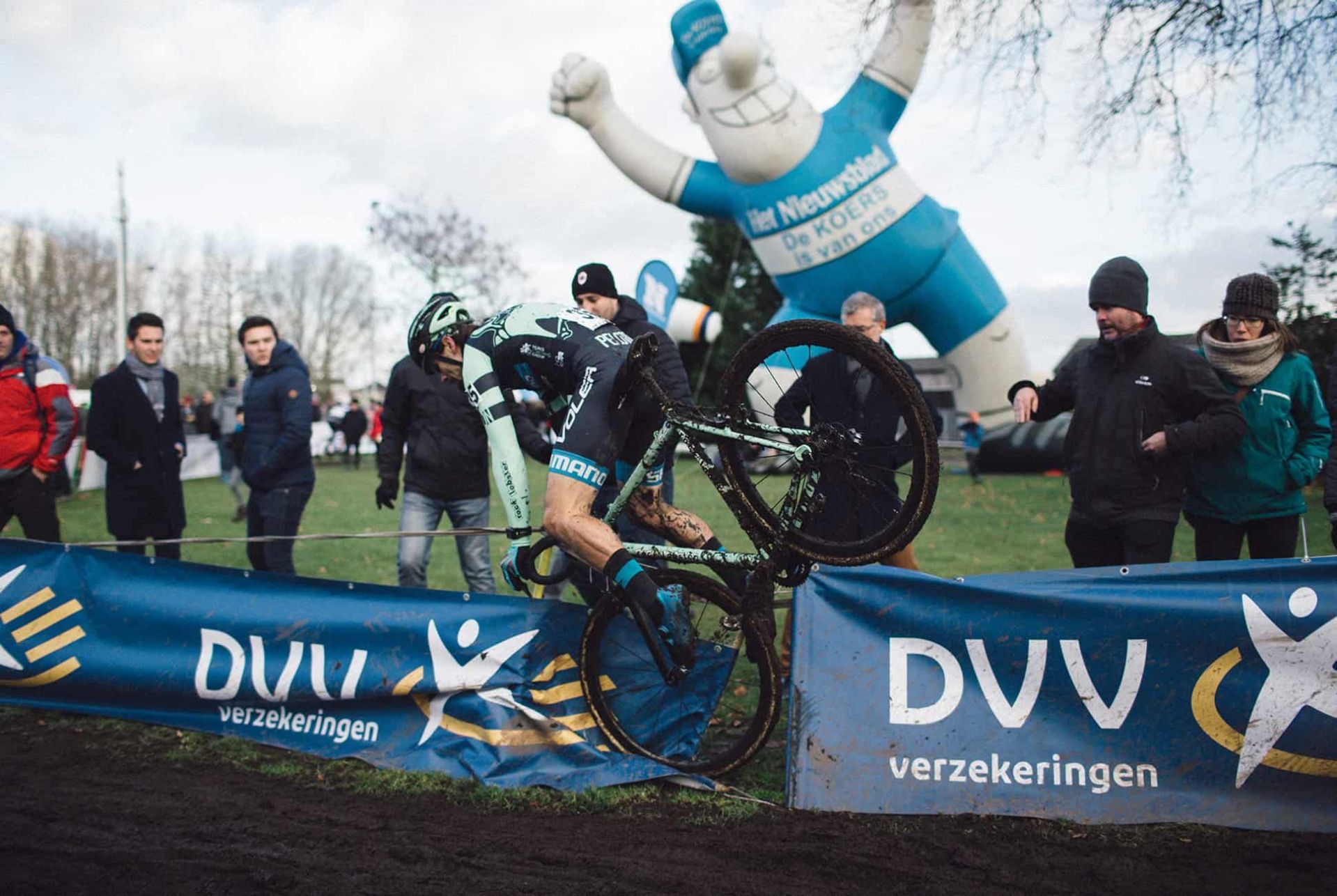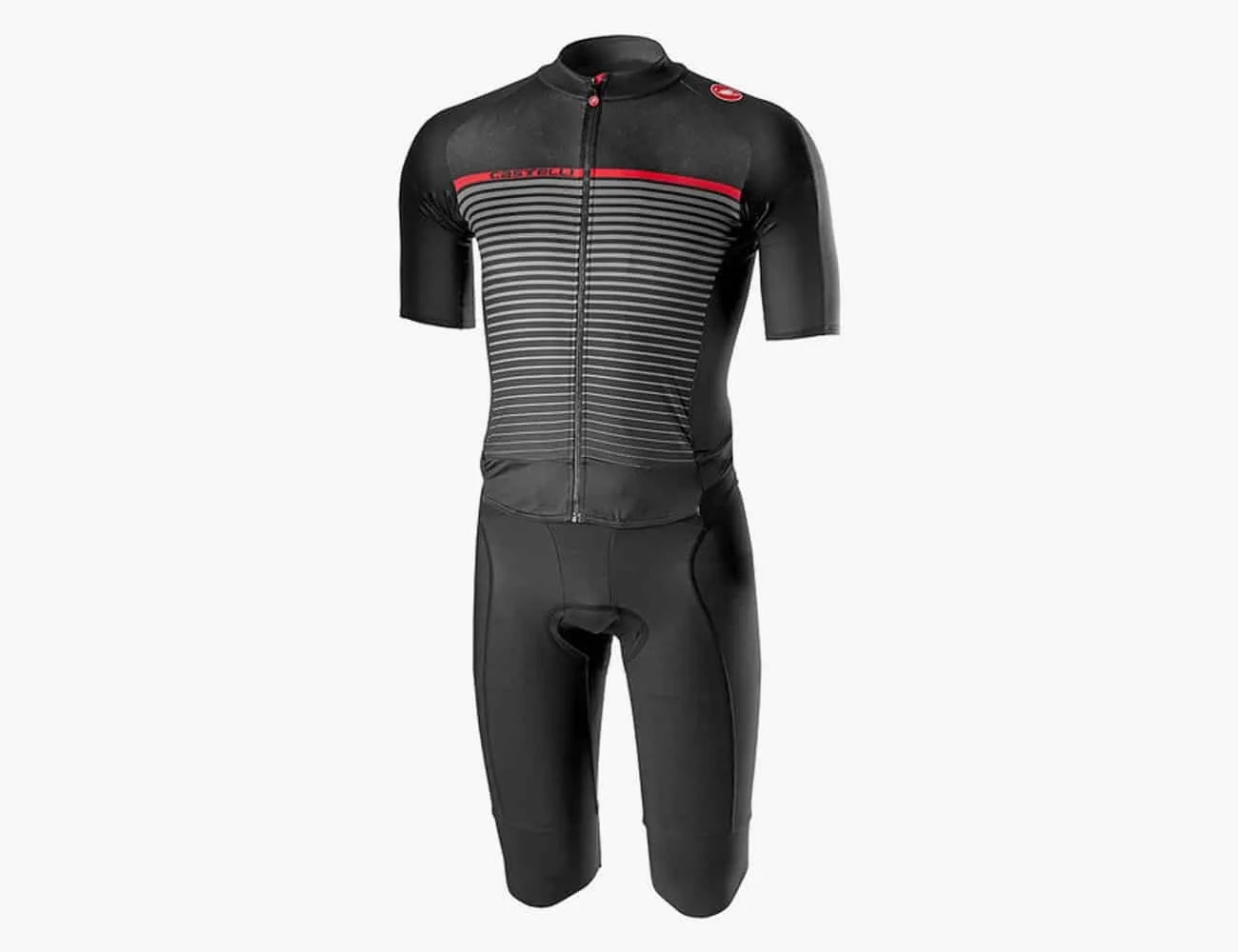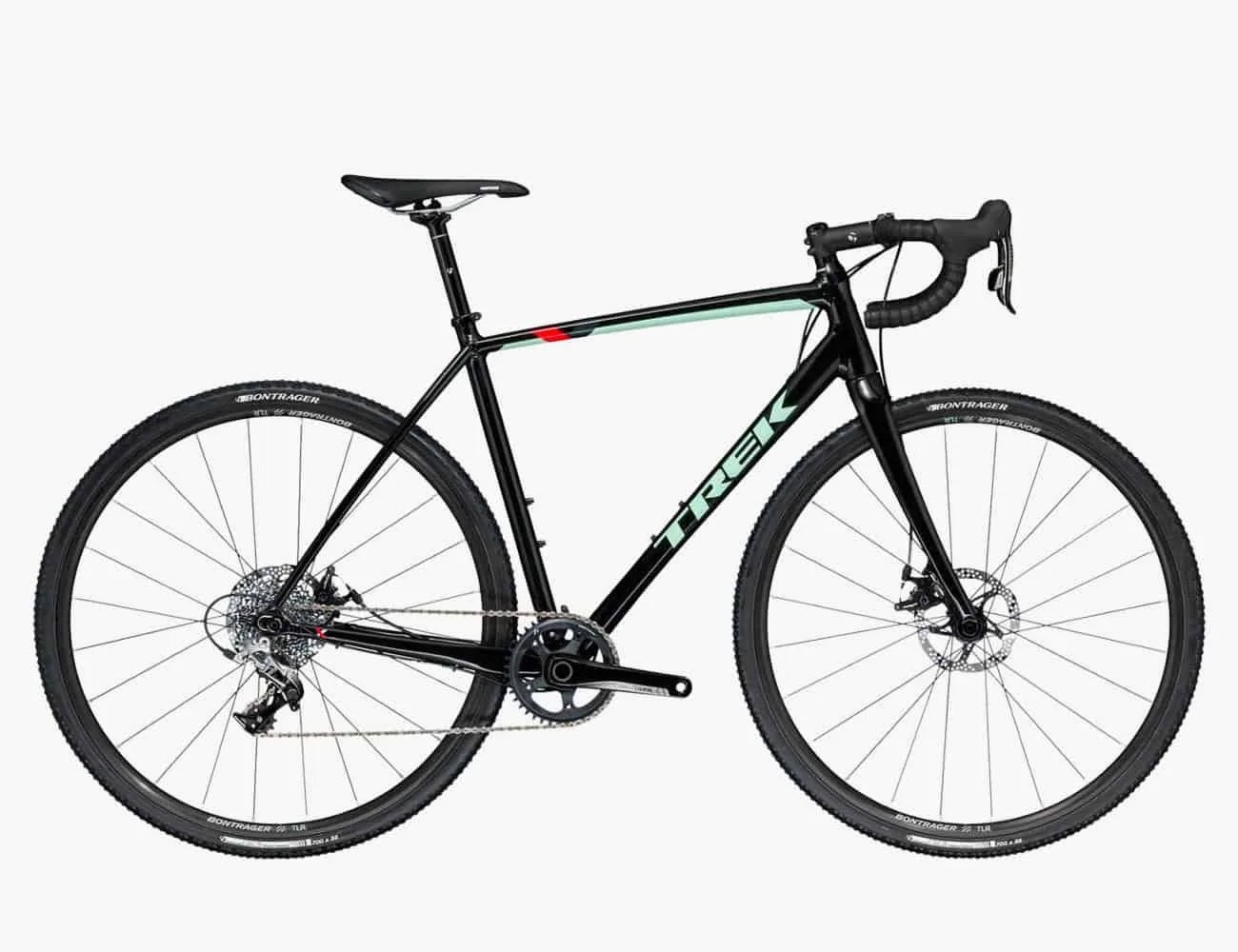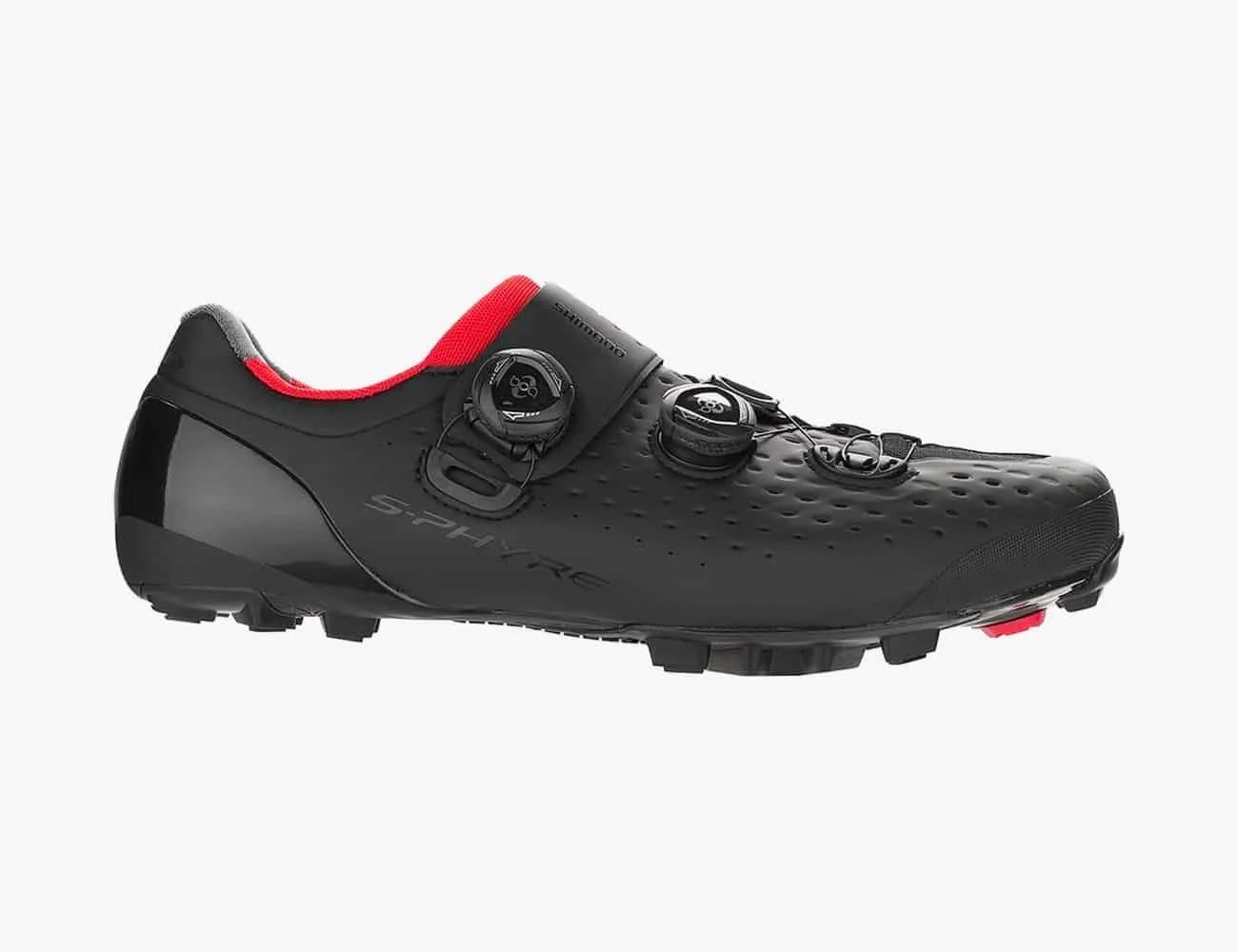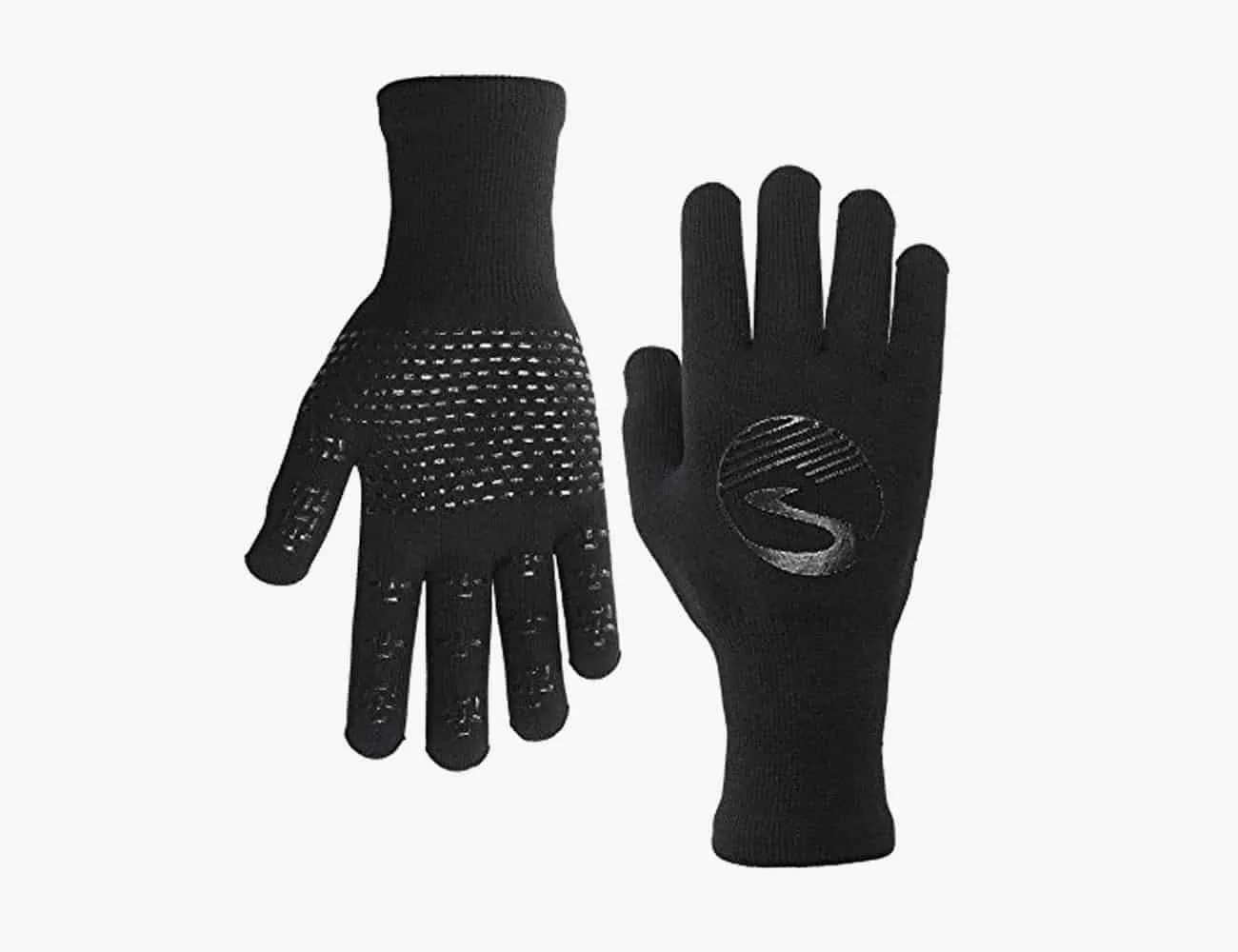For many of us, fall is the time of year to hang up the road bike, begin breaking out the ski gear and start working on the sort of body that comes from a generous overindulgence in pumpkin spice treats and Thanksgiving turkey. But, for a select few, October is the time that legs get shaved, intervals get intense and Friday nights end by 10 pm. All in the name of slipping into a skinsuit to slide around in the mud on a slightly modified road bike.
Cyclocross, or just ‘cross to its friends, isn’t a big deal in the US. But in Belgium, it’s second only to soccer in terms of spectator attendance and devotion — and perhaps first in terms of beer consumption. The short-course cycling discipline takes the speed of criterium racing, the skills of mountain biking and the all-round-athleticism of obstacle course racing — and it does so in the worst possible weather. Each lap takes riders on drop bar bikes around a muddy course, up and down steep hills and sees them dismount to run up stairs and leap over barriers. Unlike professional road racing, you can see all of the action live, and the race is over in an hour. Add in the crashes, rider-to-rider duels and technical skill on display and you have something that resembles destruction derby meeting supercross on push bikes. If Chuck Norris raced bikes, he’d race cyclocross.
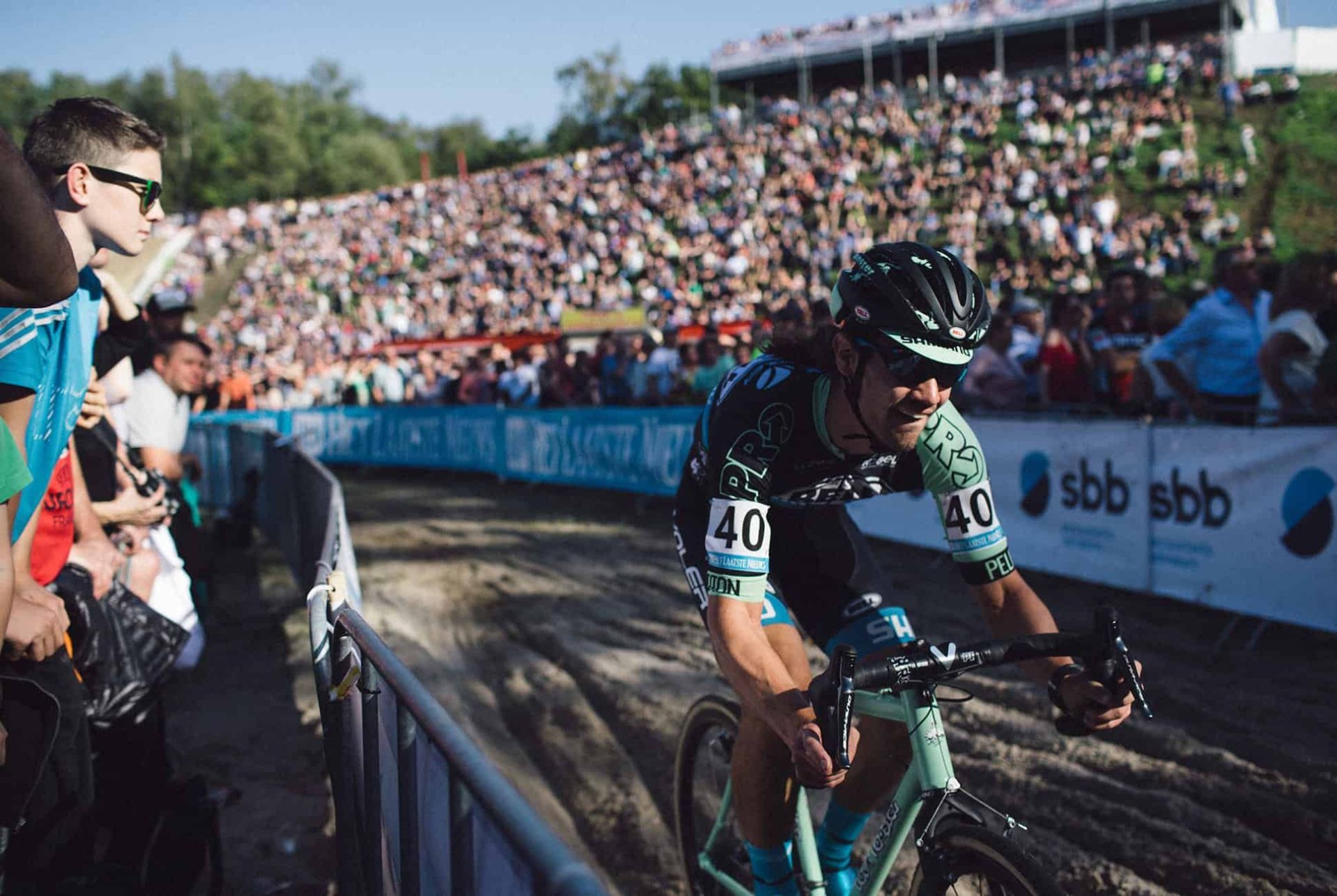
The Backstory
Cyclocross is older than the Tour de France — the first race was held in 1902. Various origin myths exist, but essentially early events were a no-holds-barred race from A to B with no pre-determined route. Riders would take shortcuts through mud and over gates and began to use touring bikes to allow for wider tires and more traction. In Flanders, the sport is known as “veldrijden” or field riding, which at once explains cyclocross perfectly, and makes it as hard to say as it is to do.
In 1910, Octave Lapize attributed his Tour de France win to a winter spent racing cyclocross, and the sport gained in popularity amongst road racers. The fact that it combined running with cycling also attracted runners in their offseason and the sport began to grow in Europe decades before the first triathlons would be raced in California. The short and intense races were a perfect way to keep fitness levels up, and to keep warm, in the wet and windy European winters. At the time, bikes were the Formula One cars of their day, and France even had army regiments mounted on two wheels. The combination of technology, athleticism and an opportunity for drinking and gambling saw the sport grow, and the first World Championship race was held in Paris in 1960.
